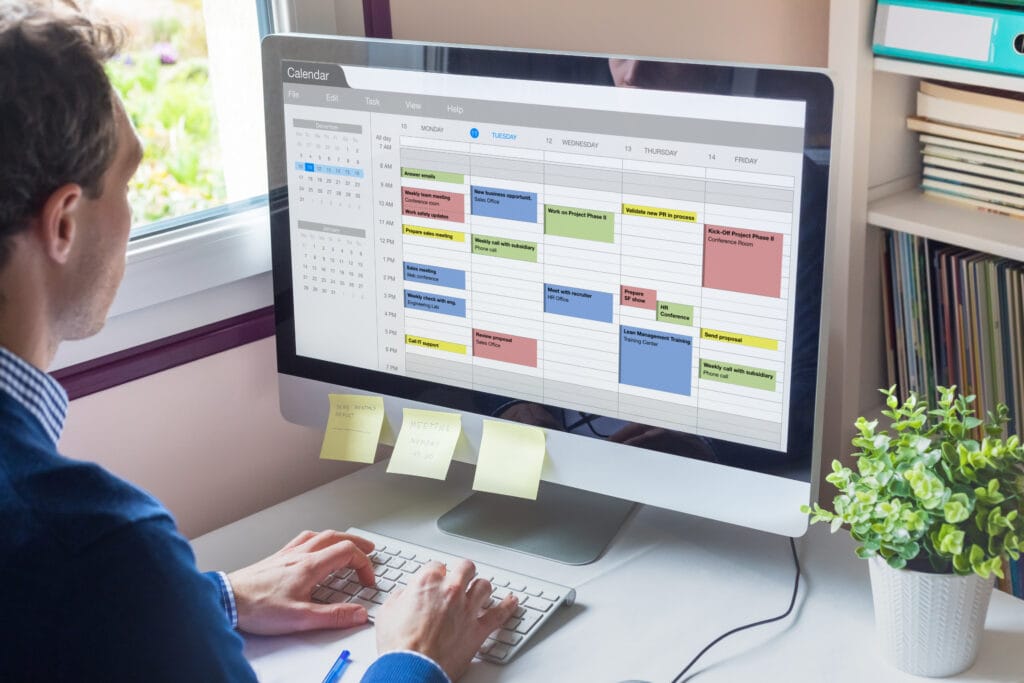 New patients are vital for office growth.
New patients are vital for office growth.
And in many offices a ton of time, money and energy goes into getting new patients. More importantly, a new patient inquiry has sought your office out and is looking for help – which is the very reason (helping patients) for which the office exists!
A study of over 10,000 new patient phone calls across the United States done by Viva Concepts found a rather alarming statistic:
 AVERAGE: The average conversion rate percentage for a new patient inquiry (i.e. new patient that calls and actually schedules) is 23%.
AVERAGE: The average conversion rate percentage for a new patient inquiry (i.e. new patient that calls and actually schedules) is 23%.
Yes, that means for the average dental office, out of 100 phone calls – only 23 will schedule. And while this isn’t great news, there is a silver lining: New patient numbers can be increased drastically just by improving office phone skills!
TARGET: The study also showed that by training the front desk properly and using the principles covered in this book, a good receptionist can consistently see a conversion rate between 70- 90%. So 90% should always be your target.
Now, before I dive into this article, I wanted to mention that this is only a portion of what we teach at the New Patient Workshop. We have had several clients attend this workshop and see a big increase in new patients as a result. You can read more about it here.
Also, if you want to see how your front desk is currently handling phone calls, I recommend signing up to receive a free Mystery Call where we call your office pretending to be a patient. We note down what your front desk does and we go over the results with you as well as go over suggestions for improvement. You can sign up here.
So, with that said, here are a few tips!
Overview
- GOAL: Your goal is to get them in the chair! Try to schedule every person who calls or walks in.
- WHO SEES WHICH PATIENT AND FOR HOW LONG: In your office, you’ll have to know with whom you would schedule a New Patient Initial Exam/Cleaning. Are they scheduled with the Hygienist or Doctor first? Some new patients go directly to the doctor for emergencies, consults, and second opinions. You’ll also want to know how long to schedule these appointments for.
- PHONE SYSTEM: There needs to be an adequate phone system in place. While you may not need 10 phone lines yet, you should only consider phone systems that can handle at least 8 phone lines. These phone lines must roll over; meaning when the main line is busy, if someone calls in, it automatically rolls to the next available line. There is no easier way to lose a prospective patient than a busy signal!
- A LIVE PERSON ANSWERING THE PHONE: You should have a live person from your office answering the phone during business hours. Having a machine or menu system in place will increase the amount of hang-ups. Also, lunch must be covered; never close the phones for lunch break. Most people handle tasks, such as making a dental appointment, over lunch when they have a break. We’ve even had some offices extend the hours a live person is answering the phone (not keeping the office open longer – but just having the phones answered) – and this has increased new patients!
- NEW PATIENT CALL LOG: There must be a Call Log at every phone. This call log will record all new patient inquiries, whether they are scheduled or not. The receptionist (or other team member handling incoming calls) simply keeps this sheet of paper next to the phone, and whenever a phone call comes in, they note down a record of the call and the result. The form can also include other useful information, such as how the caller heard about you, if they searched the internet to find your website, etc. The doctor and OM must stress the importance of this log and review it daily. Also, ensure you have a call tracking number to verify the log and listen to phone calls for training. Ideally, one person should be responsible for new patient calls – but this is an area you should consider cross-training staff on.
- NEW PATIENT INTAKE FORM: As you fill out the New Patient Form, make sure you get a handle on what the patient’s past dental experiences have been like. This will give you much of the information you’ll need before their visit, as well as an idea of what to expect, so you are prepared from a scheduling perspective when they come in to the practice.
- BASIC TRAINING: There must be an adequate education program and training on the following: How the phone works, how scheduling software works, how/ where to schedule new patients (if the primary person isn’t available), how to fill in the call log and a New Patient Form, the dental procedures offered, the importance of new patients, and current/past promotions the office is running.
- PICKING UP THE PHONE: The phone needs to be picked up by the second ring. This means that everyone in the office needs to be trained on how to use the phone and take a good message if they are not the person the patient is trying to reach and the primary person handling new patient calls is not available.
- GREETING/ATTITUDE: Greet the patient with a set greeting, e.g. “Good morning/afternoon, Dr. Smith’s office. This is _______, how can I help you?” The person answering the phone should always be smiling; it comes through to the patient. Once you find out it’s a new patient, immediately get the caller’s contact number, name and so on before doing anything else in case you are disconnected. The next step is to learn more about the reason for the call.
- SCHEDULING: New patients should be brought in AS SOON AS POSSIBLE within 24-48 hours ideally. If you don’t have availability, the schedule needs to be reviewed.
- NEW PATIENT PAPERWORK: You may or may not have new patients fill out paperwork ahead of time. If so, make sure you weave this into your new patient conversation.
- COMMUNICATION: During Viva’s study, it was noticed that the longer you spent on the phone with a new patient caller (assuming the conversation was pertinent), the better chance of scheduling the patient and getting them to show up! The keys are establishing good communication and having a great attitude. If you find telephone shoppers, insurance inquiries or second opinions annoying – you need to change your attitude or probably shouldn’t be answering new patient calls. Treat all callers with dignity, respect and kindness, and they usually respond well. You can have all the right equipment and policies but if you handle these new patient calls poorly, then you could lose many of them!
Specific Types of Calls
1. Phone Script #1 – Shoppers
Shoppers are potential patients calling to ask how much a service might be.
Some things to know:
- Many “shoppers,” but not all, have already seen a doctor and been given a diagnosis and treatment plan.
- If a patient calls to find out the price of a crown or other major procedure, and has already seen another dentist, there is a high probability that another dentist has already created a treatment plan for more than one crown or major procedures. Most patients will not leave another practice just to save a couple of hundred dollars.
- Ultimately, you have no idea what this patient needs. To begin with, only your doctor can determine this. And your doctor cannot do this without seeing this patient.
- Some offices will and some won’t quote prices over the phone, and that is a decision the doctor would need to make. Statistically speaking, answering the patient’s questions to some degree increases the probability that they might schedule.
- Some practices find shoppers “annoying,” and immediately adopt a negative attitude about them, i.e. “People who call for prices don’t appreciate good dentistry.” This is the wrong attitude. Truthfully, until you speak with this patient you have no idea why they are calling for prices. And keep in mind, a negative attitude comes across when you speak to someone on the phone. So, instead of looking at a shopper as a “bother,” look at the call as an opportunity to add a new member to the roster of patients in your practice. Be friendly, courteous and helpful, and you may end up with a lifelong patient!
 (Related: 3 Techniques to Improve Employee Phone Skills)
(Related: 3 Techniques to Improve Employee Phone Skills)
When a shopper calls – you normally have a question such as: “How much do you charge for a crown?” You could say you don’t quote prices and…the caller may hang up on you. Or, you could let them know (after getting name and number) that you will answer their question, but you need to find a few things out first. This might go something like this:
Patient: How much do you charge for a crown?
Receptionist: Absolutely, I can get you that info, but do you mind if I ask you a couple of questions first?
Patient: Sure.
*Receptionist gets name and number*
Receptionist: Have you been told that you need a crown?
Patient: I saw a dentist last week, and they told me I actually needed three of them.
Receptionist: Which teeth are they?
Patient: Two on the upper right and one on the bottom right.
Receptionist: Are they sensitive to hot or cold at all?
Patient: Yes, I’ve been avoiding cold foods on that side of my mouth.
Receptionist: Are you in any pain right now?
Patient: No.
Receptionist: Ok, I understand. Normally, what we do in cases like this is have you come in for a quick exam with the doctor. The doctor would want to look at it herself before she can tell you exactly what you need. The appointment is free (or whatever is typically charged) and you can bring the X-rays with you, if you have them.
And I can tell you that the cheapest crown is the crown you don’t need. So we should get you scheduled as soon as possible for the doctor to have a look and get it sorted out. I have time available on ______ or ______.
Patient: Okay, but if I do need a crown can you tell me how much it will cost?
Receptionist: Absolutely! A crown will range anywhere from ___ to ____ depending on how complicated the case is. But again, I can’t diagnose you over the phone, so I’d like to just get you in and have the doctor take a look. We’ll work with you to make sure we come up with a plan you’re happy with.
Patient: Okay, that works. I can come in on ________.
Receptionist: Great! Let me get a little more information so we’re all prepared for your visit, and we’ll get you scheduled.
(Completes New Patient Form and schedules patient).
(Related: How Most Dentists Are Unknowingly Losing Thousands of Dollars Per Day)
2. Phone Script #2 – Insurance Questions
While this is not a complete definitive list of every type of insurance plan with dental coverage, you will find that most plans break down into one of the following:
- Traditional/Private Insurance
- A Preferred Provider Organization (PPO)
- An HMO (Health Maintenance Organization) or DMO (Dental Maintenance Organization)
- A Government Plan (Medicaid, etc.)
 When a patient calls asking if you take their insurance, you should make a concerted effort to establish good communication with that patient. In the long run, just because your office might not accept their plan that does NOT mean they can’t become a patient! The patient however may not know this!
When a patient calls asking if you take their insurance, you should make a concerted effort to establish good communication with that patient. In the long run, just because your office might not accept their plan that does NOT mean they can’t become a patient! The patient however may not know this!
Many offices may take one of these calls — not even get the patient’s name, have the patient describe the plan and then give them a simple, “no.” Patient hangs up — lost opportunity and not a great impression for the dental office either.
Let’s see how this would go.
In Network:
Patient: Hi, I was just calling to see if you accept my insurance?
Receptionist: I can definitely answer that for you. Do you mind if I get your name and number in case we get disconnected?
Patient: Sure.
*Receptionist gets name and number*
Receptionist: Thank you. Would you mind taking out your insurance card for me?
Patient: Sure. I have it here.
Receptionist: And what is your insurance provider?
Patient: It’s _________.
Receptionist: Okay great, yes we are in-network with your insurance. Can I go ahead and get you scheduled for a time to come in?
(Completes New Patient Form and schedules patient).
As you can see, if you are a participating provider for their insurance, this is quite simple. You let them know and schedule the appointment.
However, if you aren’t a participating provider for their insurance, you would still let them know but the conversation would go a bit differently. Invite the caller to come into the office to talk to a financial coordinator to determine if this insurance plan has preventative care coverage that might work — or your office may have a new patient special you might offer them. Work with your OM to determine which way you want to handle this.
Let’s see how this conversation may progress.
(Related: This Mistake with Your Front Desk Can Cost You Valuable Production)
Out of Network
Patient: Hi, I was just calling to see if you accept my insurance?
Receptionist: I can definitely answer that for you. Do you mind if I get your name and number in case we get disconnected?
Patient: Sure.
*Receptionist gets name and number*
Receptionist: Would you mind taking out your insurance card for me?
Patient: Sure. I have it here.
Receptionist: And what is your insurance provider?
Patient: It’s __________.
Receptionist: Thank you. So we are not in-network for that particular plan, however we do have many patients with that plan (only say this if true for your practice). There is often still some coverage available and many times the price difference is not significant. We will also let you know the exact price and coverage before beginning any treatment.
We also have a new patient special right now for an exam, X-rays and a cleaning for $99. Is that something you would be interested in?
Patient: Actually I haven’t been to the dentist in awhile and I just wanted to get my teeth checked and a cleaning. So that sounds great!
Receptionist: Okay great, let’s go ahead and get you scheduled for a time to come in!
(Completes New Patient Form and schedules patient).
NOTE: If the patient is in an HMO or DMO in which you don’t participate, have the patient read the doctor’s name on their insurance card and explain that this is the only dentist they are covered to see.
If they are given an HMO plan from their employer, let them know they might have the option to quickly switch to a traditional or PPO plan and that they should discuss this with their HR department. Ensure you follow up to get the patient scheduled afterwards.
Note: In some cases, someone may understand that they are in an HMO and have no coverage in your office and despite that, want to schedule anyway! If that’s the case, by all means schedule the appointment!
3. Phone Script #3 – Second Opinions
 When a patient calls for a second opinion, they have seen another dentist and been given a diagnosis and treatment plan. And for whatever reasons, they did not follow through with the treatment plan. They are now calling your office to get your doctor to weigh in on the subject.
When a patient calls for a second opinion, they have seen another dentist and been given a diagnosis and treatment plan. And for whatever reasons, they did not follow through with the treatment plan. They are now calling your office to get your doctor to weigh in on the subject.
(Related: Should You Have “New Patient Blocks” In Your Schedule?)
We always LOVE to see second opinions. They are often one of the best sources of new patients and production because a) you already know they probably need work done, and b) they’re looking for a dentist they can trust. You simply need to give them a superior patient experience and show that you care—and then there’s a high chance they’ll opt to do the treatment with you.
With a Second Opinion, you want to:
- Get the patient in immediately for a check/exam. Schedule the appointment for the same day if possible.
- Establish good communication with the patient to find out exactly what’s going on.
- Do your New Patient Form.
- If the patient has X-rays from the previous doctor, ask them to bring the X-rays to the appointment, or have them transferred over.
- As a note: Don’t allow the obtaining of previous X-rays to add unnecessary slows to setting an appointment. If it’s going to be days or weeks to get the X-rays — or if they cannot be obtained — you need a solution to get these patients in QUICKLY. Work out a policy with your OM as to how you would handle this, along with any other points with regards to scheduling a Second Opinion appointment.
Let’s see how this exchange could be handled.
Patient: Hi, I was wondering if you do crowns at your office?
Receptionist: Absolutely we do crowns at this office. Do you mind if I ask you a couple of questions in case we get disconnected?
Patient: Sure.
*Receptionist gets name and number*
Receptionist: Great. Now, have you been told you needed a crown?
Patient: Well, I went to another dentist for a cleaning, and they told me I needed 4 crowns, but I’m not having any pain. So I just wanted to get a second opinion.
Receptionist: Ok, absolutely. We can definitely help you with that. I actually have an opening today at 3 p.m., and we do no-charge second opinions. Does that work for you?
Patient: Yes, that should be fine.
(Completes New Patient Form and schedules patient).
Receptionist: Okay, great we will see you today at 3 p.m. Also, if you have X-rays from the other dental office, if you wouldn’t mind bringing those that would make the appointment go much faster, but if you don’t have them that’s no problem.
Patient: Sounds good. I have them; I will bring them with me.
Summary
If you follow these guidelines when dealing with new patient phone calls, you will be well on your way to increasing your call conversion percentage. This is a simple process that can tremendously increase your new patient numbers.
If you are spending money on marketing, you want to make sure that you are converting as many of these new patient phone calls as possible to maximize your ROI (return on investment).
As mentioned in the beginning of this article, you can sign up to receive a free mystery call & custom report for your practice to see how your front desk is currently handling new patient phone calls and how you can get them converting a higher percentage of calls right away! Click here to sign up today.
This article is just a glimpse into what we cover at our 2-Day online interactive event, the MGE New Patient Workshop. The average attendee sees a 42% increase in new patients. That’s 150 more new patients every year! It also comes with a full money-back guarantee, so sign up today!
And if you have any questions on this topic, feel free to email me at SabriB@mgeonline.com




How can I get the mystery phone call to my office?
Thx
Hi Dr. Khalil, you can sign up for the mystery phone call here: https://mgeonline.com/your-mystery-call